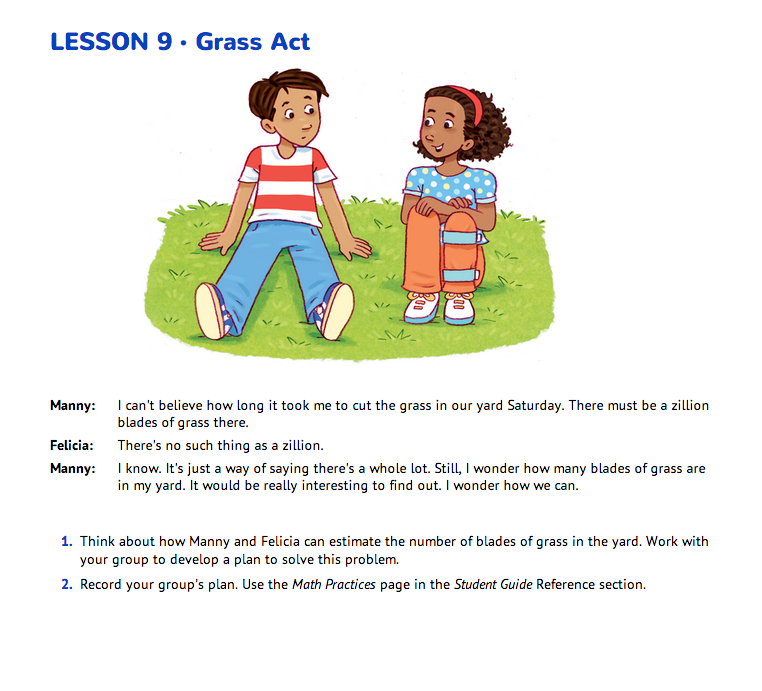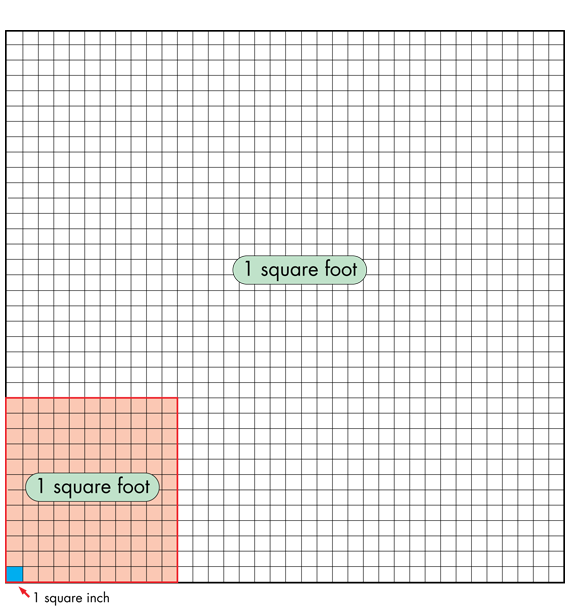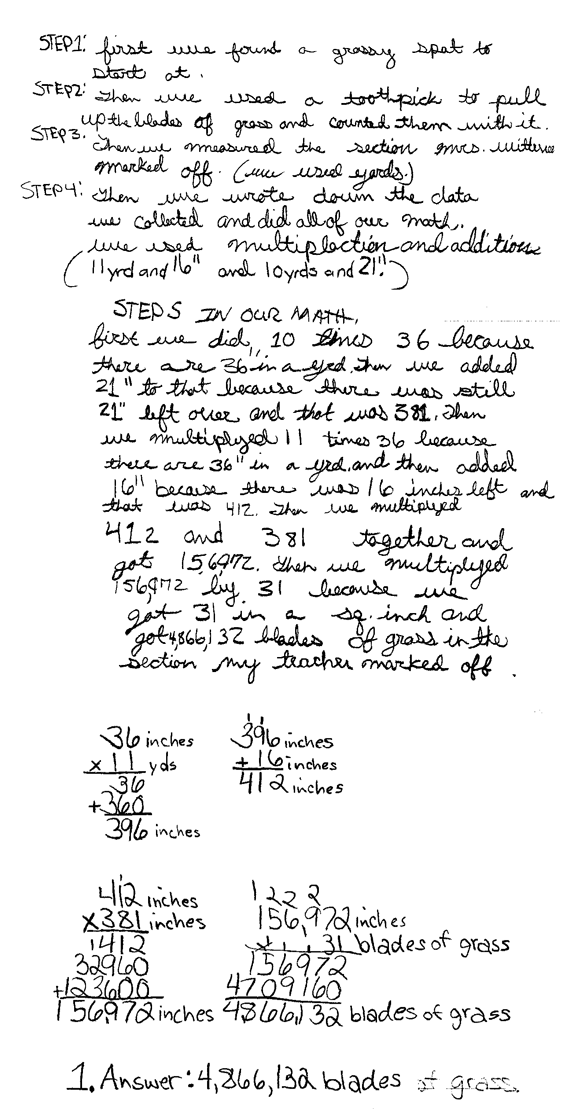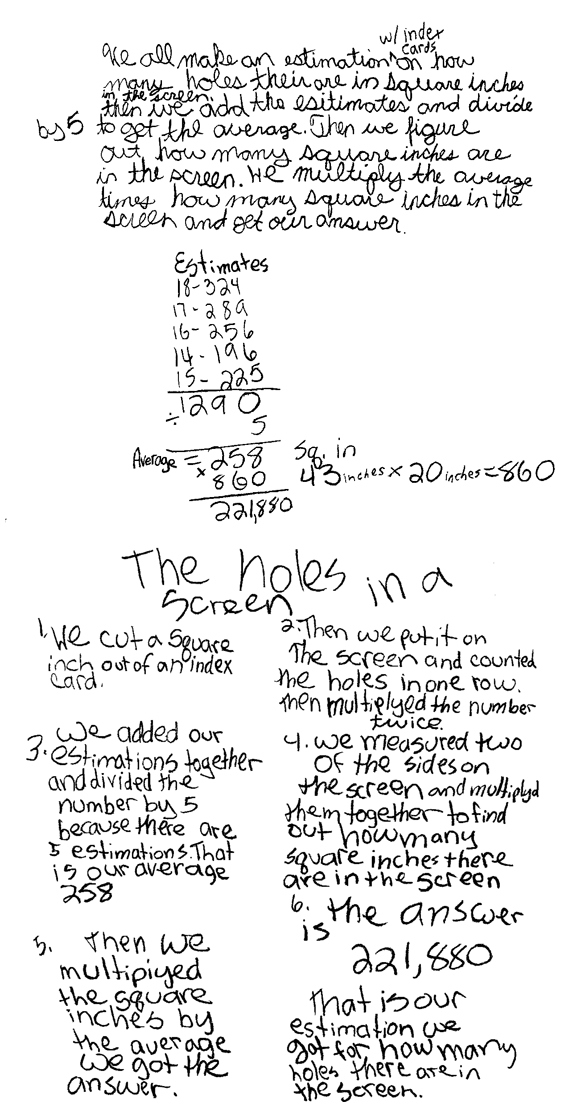Grass Act
Est. Class Sessions: 2Developing the Lesson
Develop a Plan. Read the Grass Act page in the Student Guide so that students understand the context of the problem. After reading the exchange between Manny and Felicia, ask students to work with a small group of students to answer Question 1. Students work together to develop a plan that will determine the number of grass blades in a lawn or the given area you have selected.
After small groups have had a chance to develop a plan for how to solve the problem, ask a few groups to share and discuss their plans with the class. This discussion should help students identify any possible difficulties in their own plans. See the Sample Dialog.
Ask students to record their plan for finding the number of blades of grass (Question 2). Student plans should include:
- finding the total area of the lawn;
- counting the blades of grass in several sample areas of lawn—one method is to use a note card with a square-inch hole removed to isolate a square-inch “sample” of grass to count;
- finding the average (median or mean) number of blades of grass in the samples; and
- using the average to estimate the number of blades of grass in the larger area.
Solve the Problem. Once students have a plan for finding the number of grass blades in an area, they are ready to measure the total area and collect data. Students will get a variety of answers for the number of blades of grass in a square inch. Ask them to decide which number they are going to use. See the Content Note for how one teacher helped her students decide on the mean, median, or mode.
To find the number of square inches in the total area, the class should negotiate the basic measurements of the area and then students should work in small groups to complete the problem.
Write Solutions. Before students write their solutions, facilitate a class discussion in which students develop problem-specific expectations for writing up their problem solving process. To begin, display the Math Practices Notes Master and refer students to the Math Practices page in the Student Guide Reference section.
Ask students to discuss the following with their group:
As groups discuss the expectation, note which groups develop expectations that are specific to the problem and clearly state what needs to be included in a response to fully explain their strategy. Ask selected students to write their specific expectation for one of the entries on the display of the Math Practices Notes Master. Sample expectations are shown in Figure 2. Discuss the expectations with the whole class and revise them based on their input.
At this point, ask students to individually write a paragraph describing their group's strategies. Encourage them to write their paragraph so they meet the expectations collected.
Review Student Work. Use samples on the Ana's Work and Tim's Work Masters or choose appropriate work from your class to discuss how to review others' work. Point out to students that they should be able to follow the steps in the written paragraphs to solve the problem the same way the writers of the paragraph did.
Distribute one sample of student work to each group of students so that each work sample is evaluated by at least two groups. Distribute one copy of the Grass Act Feedback Box Assessment Master to each group as well. Ask each group to use the Feedback Box to guide a review of the student work. See Figures 3–6 for student work samples and sample completed Feedback Boxes. In Figure 3, Ana estimated the total number of blades of grass in a portion of a playground. In Figure 5, Tim estimated the number of holes in a window screen.
Organize small groups into larger groups that reviewed the same student work. Ask students to share their review of the student work and discuss any discrepancies.
Revise Work. Ask students to use what they learned from the discussion of the student work to revisit and revise their own work on the Grass Act problem.























